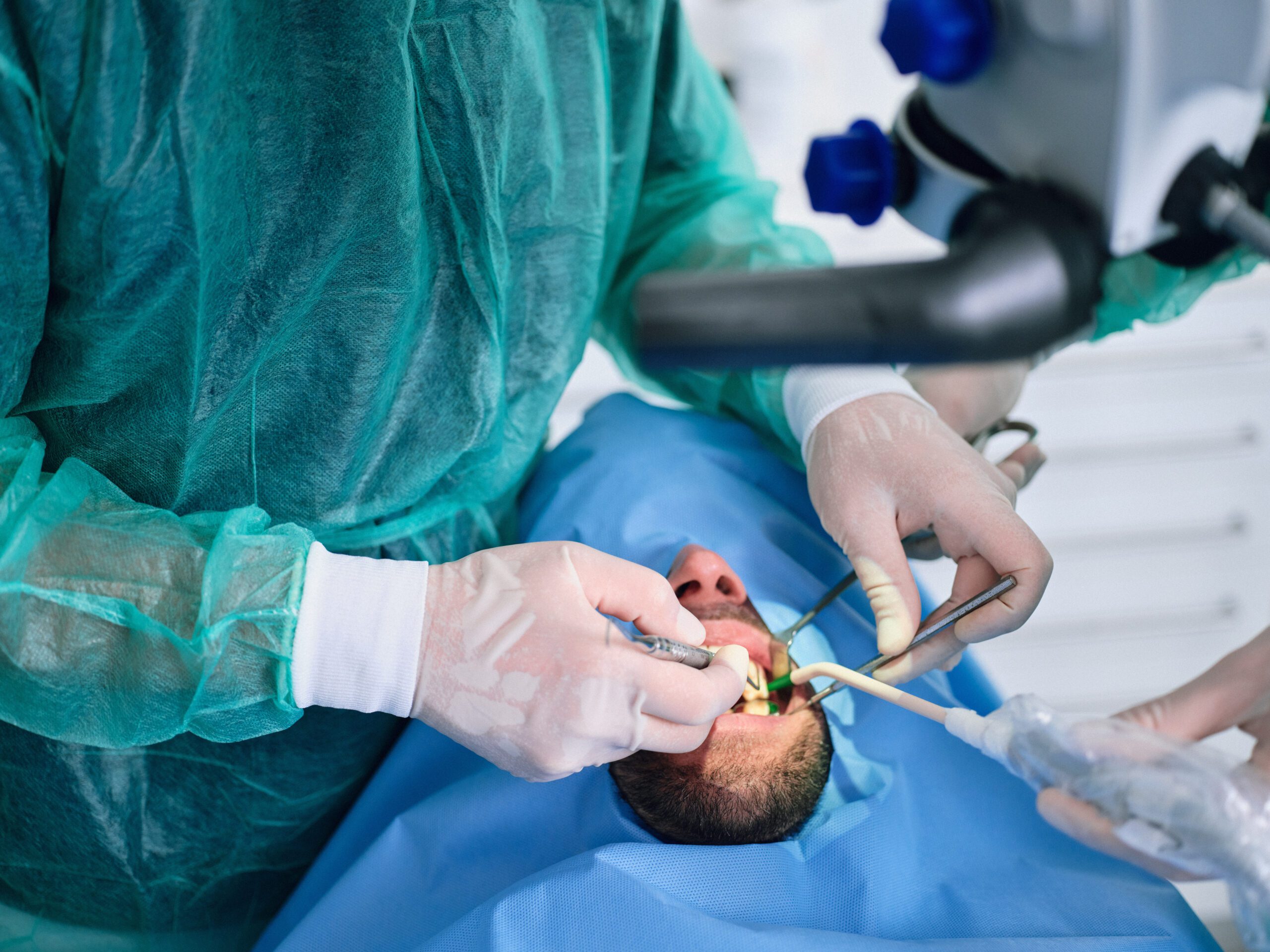Our oral surgery is based on modern technology and the use of bioceramic implants made of zirconium oxide, which respect the natural healing processes and behave completely differently in the body than metal implants. We believe that the mouth is part of a whole – that is why we plan each procedure in accordance with the body, not against it. The goal is more than just replacing missing teeth, the goal is to create conditions for long-term health.
Bioceramic dental implants made of zirconium oxide bioceramic are increasingly popular, as they offer numerous advantages compared to classic metallic titanium implants, which are a titanium aluminum and vanadium alloy labeled Ti–6Al–4V.
This alloy contains 6% aluminum and 4% vanadium. We use advanced bioceramic solutions from Z-Systems, a leader in the field of bioceramic implants, which bring biocompatibility, durability and a natural appearance. This innovative technology enables long-lasting results and aesthetic perfection, which are important for a healthy and confident smile.
Advantages of Bioceramic Implants
Bioceramic implants, such as those from Z-Systems, are extremely gentle on the body. Their surface naturally repels bacteria, which reduces the risk of inflammation around the implant – a problem that often occurs with titanium implants. Furthermore, bioceramic implants are completely metal-free, which means that they do not cause allergies or hypersensitivity or unforeseen immune responses. In addition, they do not cause any “electrical” interactions with soft tissue that sometimes occur with metal implants, which contributes to a more pleasant experience.
A very important aspect is aesthetics. Bioceramic implants are naturally white in color, which allows for a very harmonious appearance with natural teeth and gums. Unlike titanium implants, they do not cause a dark appearance of soft tissue, which is especially important in the front visible areas of the mouth.
Innovative Z-Systems Technology
Z-Systems offers a wide range of bioceramic implants, such as the Z5-BL (bone level) and Z5-TL (tissue level), which use the patented SLM® (Surface Laser Modified) surface. This surface allows for faster and better implant attachment to the jawbone. Clinical studies have shown that bioceramic implants fully compete with titanium in terms of quality, providing the same high level of success and long-term stability.
Z-Systems offers something else unique – 100% bioceramic solutions, including screws in the case of two-piece implants. An important study has confirmed the reliability and exceptional resistance of bioceramic implants to long-term loading and aging. This is a significant breakthrough, as the results show that hydrothermal aging does not affect their long-term strength. We are grateful for the cooperation with Prof. Dr. Andraž Kocjan and Dr. Aljaž Ivekovič from the Jožef Stefan Institute, with whom we are in close contact when selecting the best manufacturer.
Strength and durability of bioceramic implants
Research, such as that conducted by Kohal et al. in 2023, has shown the exceptional durability of bioceramic implants made of zirconium oxide ceramics. Even after simulating a million chewing cycles and exposure to high temperatures, they showed no signs of damage or degradation of the material. This confirms that bioceramic implants are an excellent choice even for higher loads.
A comparative study from 2020 additionally showed that bioceramic implants are equivalent in terms of performance to titanium aluminum vanadium, while offering completely acceptable aesthetics and a significantly lower risk of complications.
Long-term results and successWith years of use of Z-Systems bioceramic implants, clinical research shows that these implants provide exceptional long-term stability. Numerous researchers have proven that bioceramic implants effectively maintain a healthy soft tissue state, which is crucial for long-term treatment success.
Concluding thoughts
If you are looking for a solution that combines aesthetics, durability and biocompatibility, bioceramic implants are the right choice. With their advanced technology, resistance to bacteria and natural aesthetics, they offer long-term health and functionality – all of which contribute to a confident and natural smile that you will be happy to show off.
SOURCES
- Choukroun J, et al. An opportunity for the standardization and quality control of PRF. Growth Factors. 2006;24(4):243-9.
- Tunali M, et al. Two neglected biologic risk factors in bone grafting and implantology: High LDL cholesterol and low serum vitamin D. ResearchGate. 2013
- Z-System – www.zsystems.com​:contentReference[oaicite:14]{index=14}​:contentReference[oaicite:15]{index=15}
- Kohal R. et al. “Soft and Hard Tissue Integration of Zirconia Implants” – Journal of Oral Implantology
- Kohal R. et al. “Fracture Resistance of Two-Piece Zirconia Implants after Dynamic Loading and Hydrothermal Aging” – J Funct Biomater 2023
- Kohal R. et al. “Fracture Resistance of Two-Piece Zirconia Implants after Dynamic Loading and Hydrothermal Aging” – J Funct Biomater 2023
- Balmer M, et al. “Zirconia implants restored with single crowns or fixed dental prostheses: 5-year results of a prospective cohort investigation.” Clin Oral Implants Res. 2020
- Afrashtehfar KI, Del Fabbro M. “Clinical performance of zirconia implants: a meta-review.” J Prosthet Dent. 2020
-
Kocjan A, Cotič J, Kosmač T, Jevnikar P. In vivo aging of zirconia dental ceramics – Part I: Biomedical grade 3Y-TZP. Dent Mater. 2021 Mar;37(3):443-453. doi: 10.1016/j.dental.2020.11.023. Epub 2020 Dec 14. PMID: 33334584.
- Cotic Jasna, Kocjan Andraz, Panchevska Sanja, Kosmač Tomaž, Jevnikar Peter, 2020/12/01, In vivo ageing of zirconia dental ceramics — Part II: Highly-translucent and rapid-sintered 3Y-TZP, DOI: 10.1016/j.dental.2020.11.019, Dental Materials
